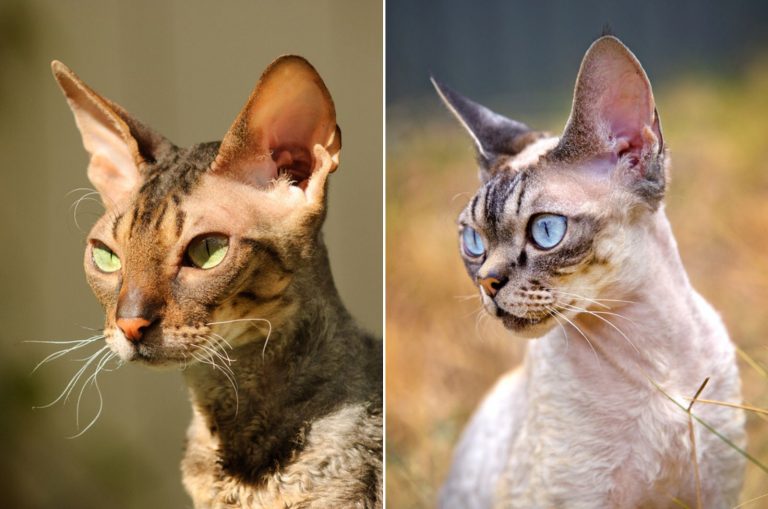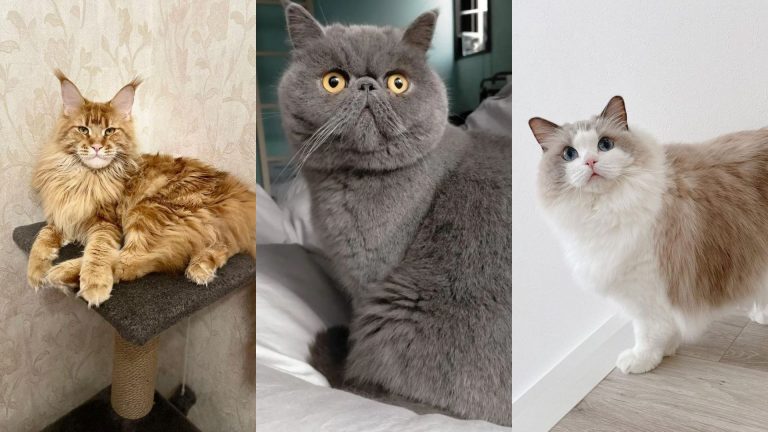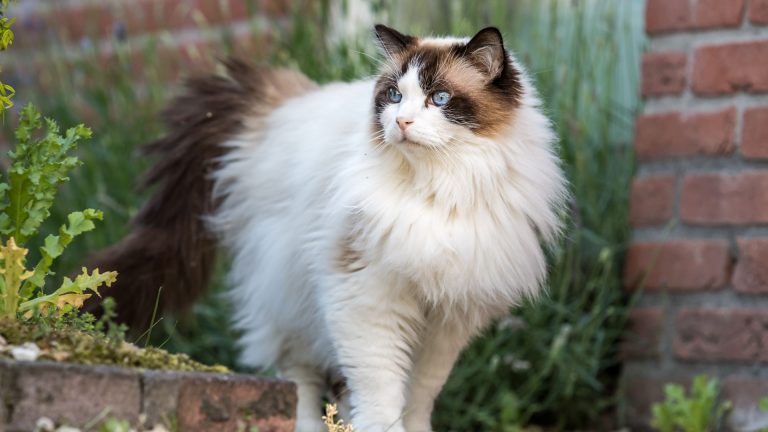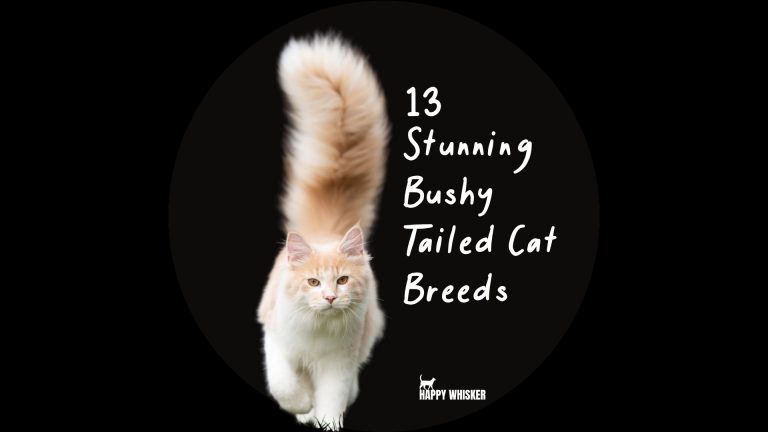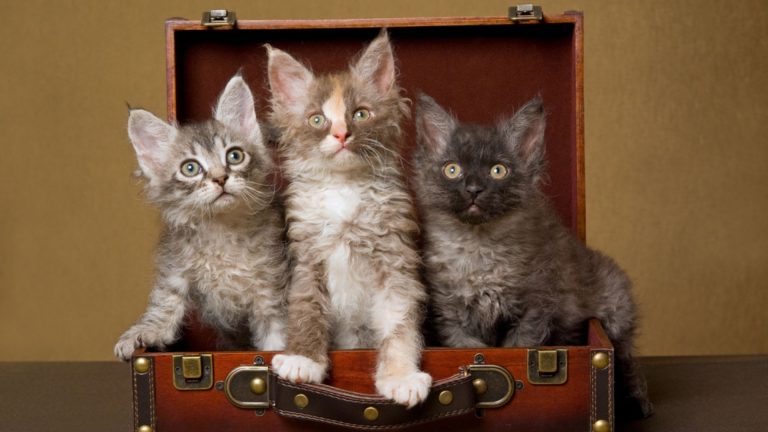The Ultimate Guide To Unique Mink Ragdoll Cats
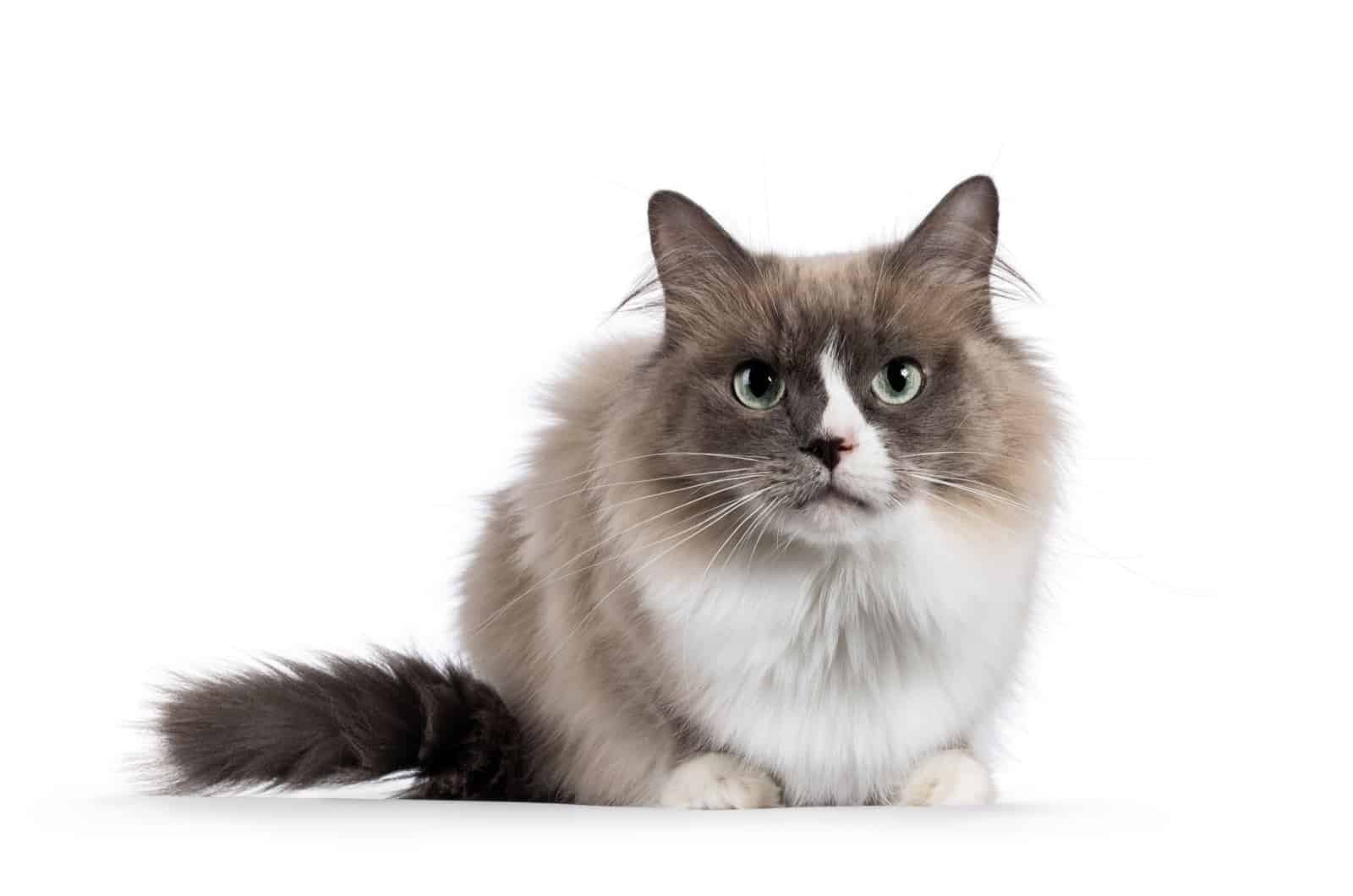
I’m sure many of you haven’t heard of the beautiful Mink Ragdoll cats. That’s completely understandable as they are very rare and hard to find.
Contrary to common belief, Mink Ragdolls are not a new breed of cat. In fact, they have been around since the very first Ragdolls were created by Ann Baker!
Mink Ragdolls are an old line of Ragdolls that differ in appearance from the traditional Ragdolls we know today, which we will talk about further below.
If you want to learn more about these unique cats, read on!
Mink Ragdoll – What Exactly Is A Mink Ragdoll Cat?
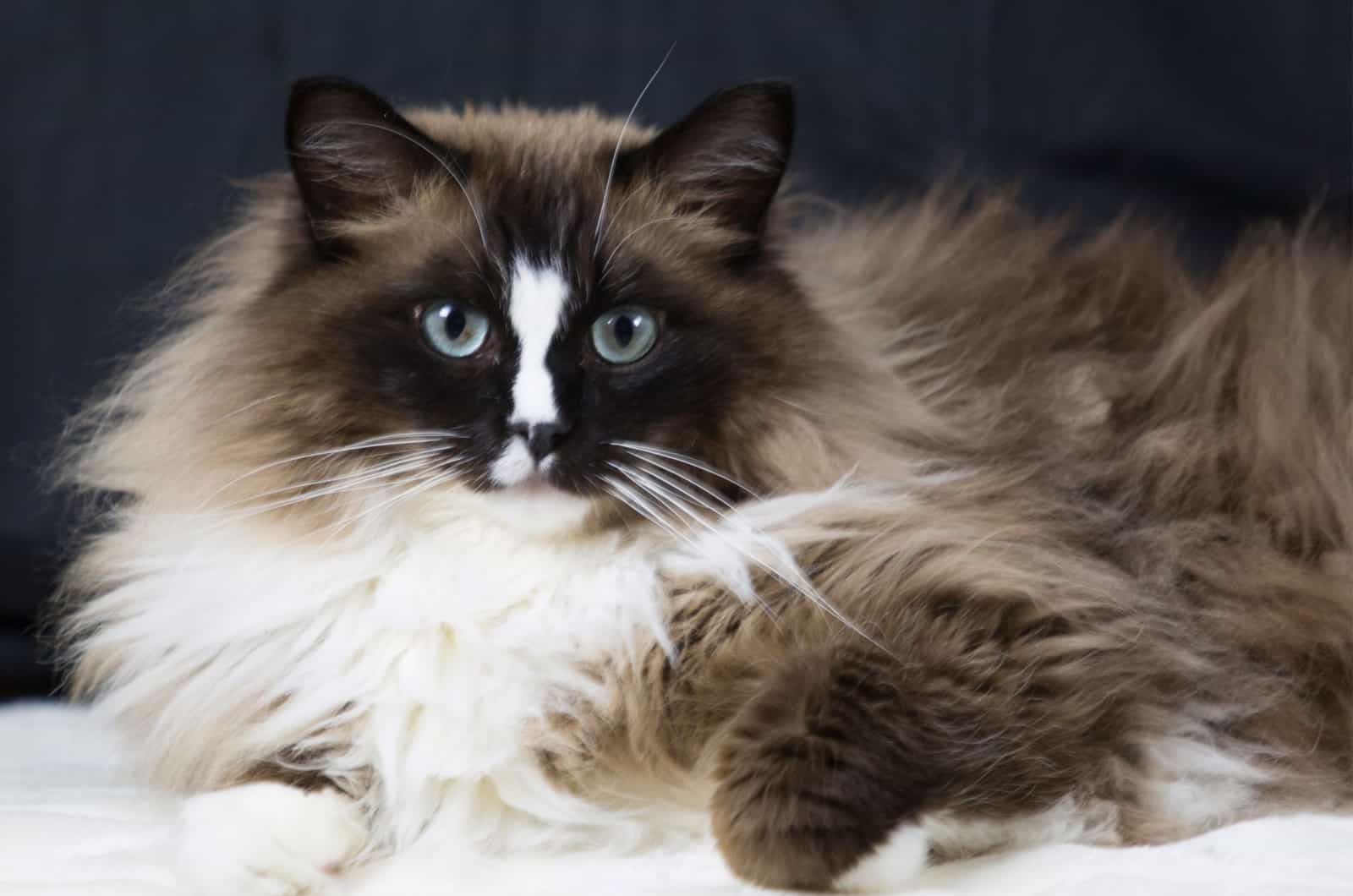
There is a common misconception that the Mink Ragdoll is a recently developed new breed.
If you’re wondering if Mink Ragdolls are true purebred Ragdolls, they definitely are!
Many people don’t know that Traditional Ragdolls and Mink Ragdolls have more similarities than differences. Most importantly, they are both Ragdolls, just different varieties.
Their ancestry is the same and the majority of their genetic makeup is the same, with just a few noticeable differences, which we are going to explore.
So, how come people only talk about the Traditional Ragdolls (and usually miss out the Traditional part of their name), whereas Mink Ragdolls are somewhat unknown?!
This rather unfair situation (as both varieties are beautiful) is the result of the difference in their coat color and pattern – most breeders and buyers prefer the Traditional Ragdoll look.
A Never-Ending Battle No1: Mink Ragdoll Vs Traditional Ragdoll
A lot of people are interested in learning the differences between a Mink Ragdoll cat and a Traditional Ragdoll cat, so let’s go over this right at the beginning of the article!
The two major differences between the two mentioned varieties can be observed in their fur and eye color.
Mink Ragdolls are famous for their thick, dense fur which makes them stand out from the Traditional Ragdolls, whose fur is not as dense or thick.
Although Traditional Ragdolls have nice soft fur, Mink Ragdolls have nicer, softer fur.
Think about the Mink in Mink Ragdolls. Mink fur is highly prized in the fashion and clothing industry due to its high quality and softness. In my opinion, Mink Ragdolls have the nicer coat because it is so soft.
Mink Ragdolls also have a more intense, darker coat coloring, both as kittens and as adults.
In contrast to Traditional Ragdoll kittens, which are born white and gradually acquire their color, Mink Ragdoll kittens are born with colored coats.
The two also differ when it comes to eye color. Traditional Ragdolls have blue eyes, while Mink Ragdolls are famous for their aqua colored eyes.
Let’s put all of this information in a table, for a better overview.
[table id=238 /]
When you look at a photo of a Traditional Ragdoll and a photo of a Mink Ragdoll, I’m sure the first thing you’ll notice is the difference in the intensity in their coat color (Minks are darker), and the color of their eyes (Minks have piercing blue-green eyes).
Mink Ragdoll Physical Appearance (In Detail)
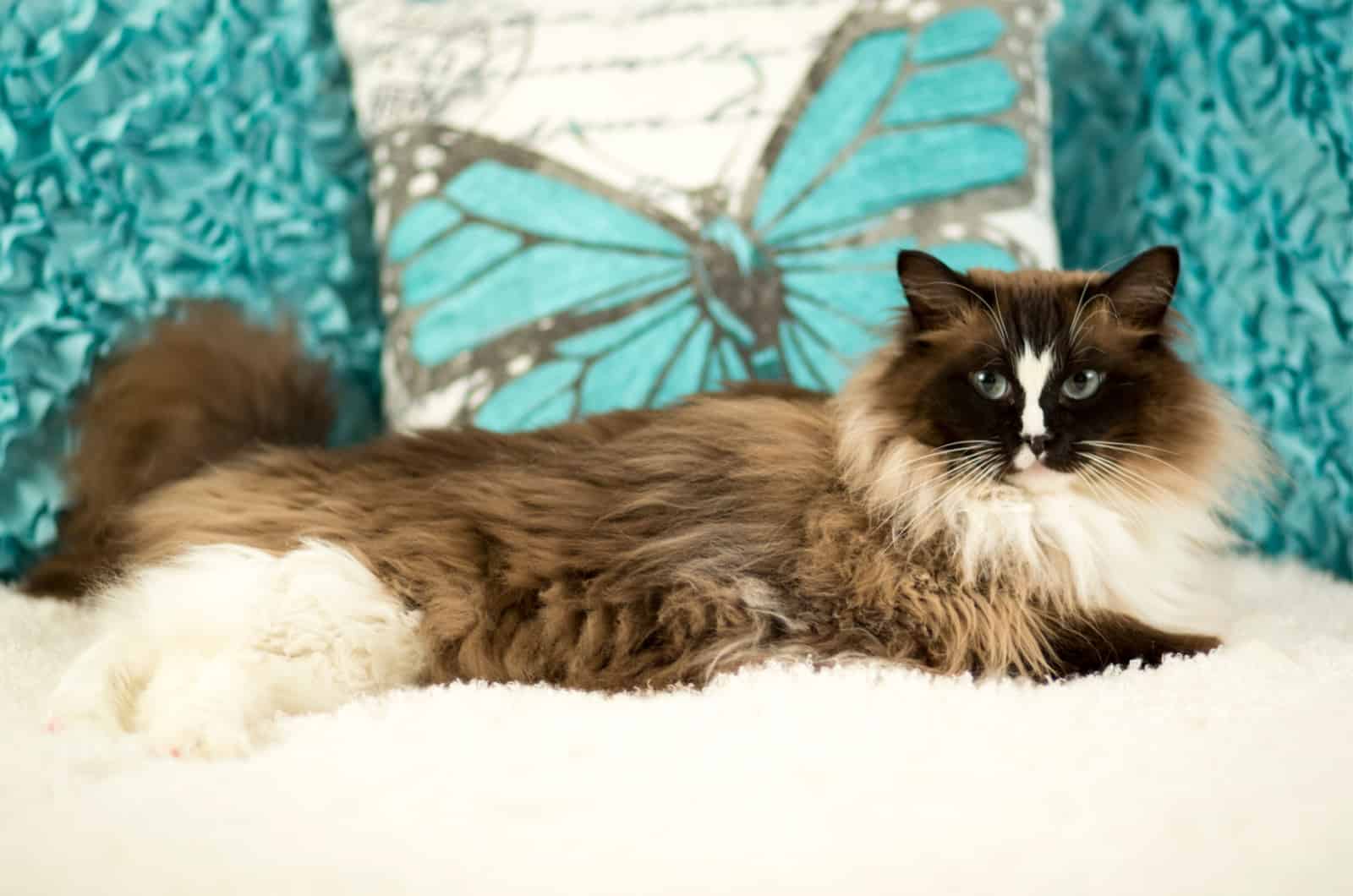
Now, let’s get into the physical characteristics of these unique cats!
Size
Adult Mink Ragdolls are pretty large cats, almost as big as Maine Coons!
Female Mink Ragdolls:
• Height: 9-10 inches
• Body length: 17-19 inches
Males are, as expected, larger than females.
Male Mink Ragdolls:
• Height: 9-11 inches
• Body length: 18-21 inches
Body Characteristics
Mink Ragdolls have a long torso and a broad chest. They are heavily-boned, well-muscled cats with large, round paws and very long tails (which are the same length as their entire body!)
Their front legs are slightly shorter than the hind legs, and there is one interesting characteristic – they usually have a little fat pad on their lower belly!
Type Of Fur
Mink Ragdolls are long-haired kitties with very thick fur and no undercoat. Their coat is naturally not prone to matting easily, which is great news for owners of Mink Ragdolls.
The fur of Mink Ragdoll cats has one amazing characteristic – it is extremely silky and soft to touch. It can be compared to the softness of mink fur (aka the world’s most favorite fur) and this is where the name Mink in Mink Ragdoll comes from.
Coat Pattern
• Colorpoint
Colorpoint is a common Ragdoll pattern, which occurs when color is deposited on the “points” of the cat’s body.
For example, seal colorpoint Mink Ragdolls will have very dark brown color on their points (the face, ears, tail and paws), and lighter colored fur on the rest of the body, a very characteristic look for Mink Ragdolls.
• Mitted
Mitted coat pattern and colorpoint pattern differ in just one feature; mitted Ragdoll cats have white front and back paws, as if they’re wearing mittens.
For example, seal mitted Mink cats will have seal-colored points, but their paws will be white. Blue mitted cats will have grayish points, but their paws will be “wearing mittens”.
• Bicolor
This beautiful coat pattern is famous for its white inverted “V” on the cat’s face. These cats also have white legs and a white belly.
• Lynx
This pattern in Mink Ragdolls is similar to a tabby pattern, and is characterized by a color range from goldish-brown to beige, usually with black spots and some black accents on the face.
• Tortie
Torite is short for tortoiseshell, and the name comes from the shell of a tortoise. Tortie cats are calico-colored, meaning they’re tricolored (white, orange, and black).
Coat Color
The coat color range of Mink Ragdolls is comprises of six ragdoll colors:
• Chocolate
This coat color ranges from very light to very dark shades of chocolate brown.
• Seal
The seal coat color can be described as a very dark brown and Mink Ragdolls with colorpoint pattern and points in this color are extremely similar to Siamese cats.
• Blue
Many cat lovers adore the blue gray coat color, which is seen in shades of gray. A gray coat color is actually a diluted black color.
• Lilac
Lilac is also a diluted cat coloring, this time the chocolate color is diluted. Lilac cats are absolutely beautiful; many of these cats have a lovely slight pink hue.
• Red
This coat coloring is also called flame coloring (although the red is pale rather than fiery).
• Cream
Cream coat color is a diluted red color, and it’s essentially a very light reddish color that I personally find extremely beautiful.
Eye Color
One striking feature of Mink Ragdolls is their mesmerizing aqua eye color. Their eyes are not blue, but rather a cross between blue and green.
The blue-green eyes of Mink Ragdolls is one of their most famous characteristics and a distinguishing trait when compared to traditional Ragdolls, whose eyes are exclusively blue.
Many have compared their eye color to the color of the Caribbean Sea. It’s especially striking when the cat’s coat color is very dark, so their eyes really stand out and captivate everyone who sees them!
Facial Features
Mink Ragdolls have no extreme facial features. They have large oval eyes, prominent chin with a rounded, medium-length muzzle.
Mink Ragdoll Cats Are Gorgeous, What About Their Personality?

Photo from: @floofymiles
Now that you know all about their size, coat pattern and colors – let’s explore their personality!
Are They Friendly?
They absolutely are! These kitties love socializing and will have no problems meeting new people and pets!
They are so friendly that they even like being picked up and held. When they’re in your arms, they go limp (just like a ragdoll, hence the name). That’s why they’re sometimes called “floppy cats”!
Are They Playful?
No matter if the cat is a kitten or a senior cat, Mink Ragdolls are always in the mood for having fun. Although they might not be the most energetic cat out there, they will never turn down some playtime!
They sure like their cat trees, wands and teaser toys, so make sure to provide plenty of those around your home!
Are They Good Family Cats?
Mink Ragdolls make amazing family cats due to their calm temperament and sweet personality. This is extremely important, especially in a home with a lot of kids. They are not aggressive and will get along well with other pets too.
It should be mentioned that kids need to be taught how to properly interact with a cat to ensure that there are no uncomfortable situations for the cat or the kids.
Are They Affectionate?
They sure are! Like any cat, Mink Ragdolls like their independence, but they also like affection too! They make amazing cuddle companions thanks to their super-soft fluffy fur!
They enjoy the company of people (especially if you’re their owner!) and are no strangers to petting and snuggling – in fact, they even demand it themselves sometimes!
Are They Needy?
Mink Ragdolls do not tolerate being alone in the house for a long time, which puts them in the “needy cat” list. They require more care and attention than most cat breeds.
Of course, they don’t have to be around their owner and other people receiving affection 24/7, but they do like company.
What About The Origin Of Mink Ragdoll Cats?
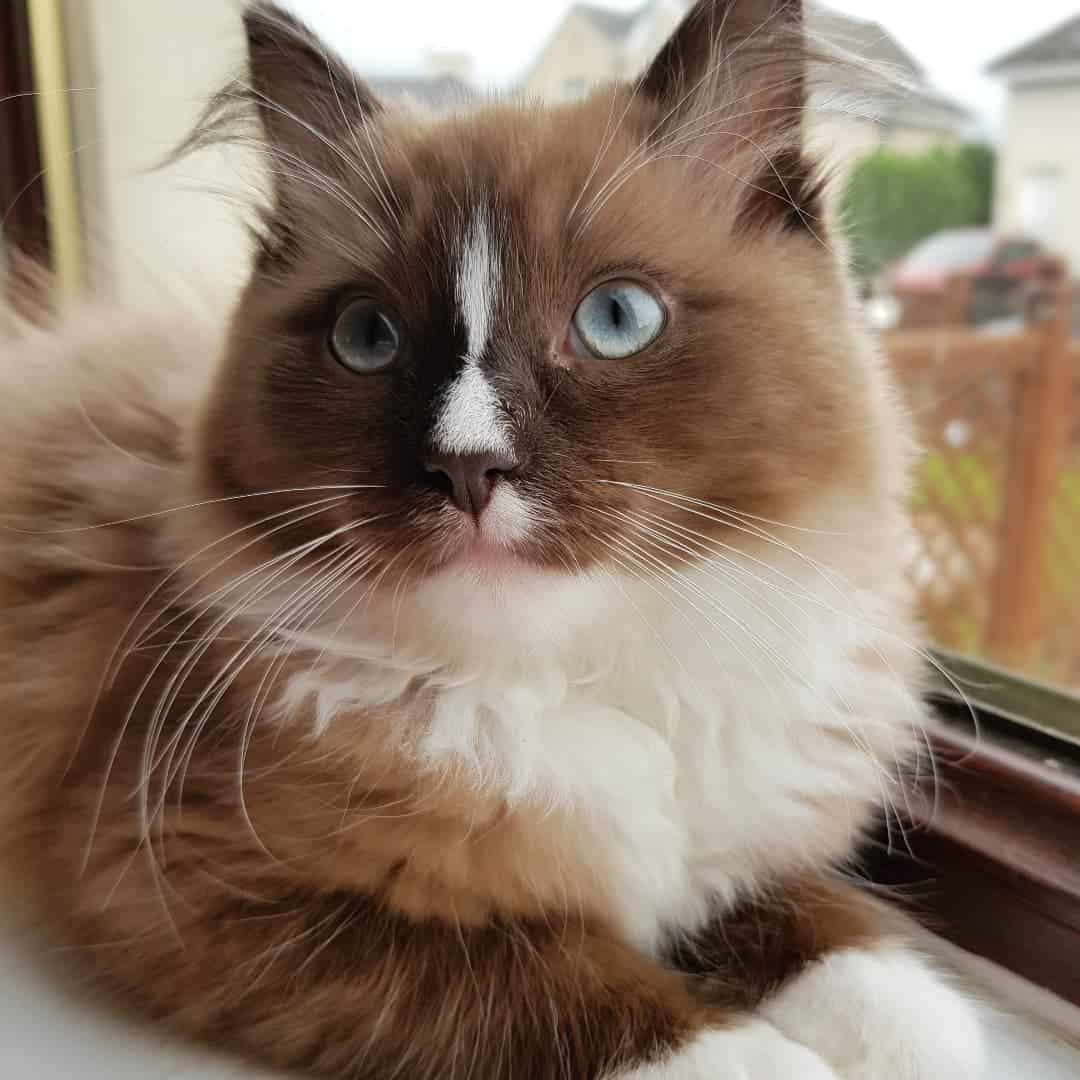
Photo from: @floofymiles
Mink Ragdoll is a bloodline that dates back to Ann Baker’s original Ragdolls. As a result, Traditional Ragdolls and Mink Ragdolls share a common ancestor.
If you don’t know who Ann Baker is, and the interesting story about the origin of these popular cats, continue reading!
What’s The Origin Of Ragdoll Cat Breed?
Ragdoll cats were created by breeder Ann Baker in the early 1960s. This cat breed’s origins are somewhat obscure. We do know that all Ragdolls arose from Josephine (a long-haired white cat), a cat owned by Ann Baker.
Out of all the kittens Josephine gave birth to within Anne Baker’s cattery, a couple of them were extremely important for the creation of the Ragdoll breed.
Josephine produced Blackie, an all-black cat which resembles a Burmese cat, as well as Daddy Warbucks, a seal point cat.
Blackie then produced Buckwheat, a dark brown/black Burmese-like female, while Daddy Warbucks produced a bi-color female cat named Fugianna.
Matings of Daddy Warbucks to Fugianna and Buckwheat created cats whose descendants we now know as Ragdolls.
Traditional And Non-Traditional Ragdolls
Today, there are traditional and non-traditional Ragdoll cats.
Traditional Ragdolls have the colorpoint, bicolored or mitted pattern, as well as blue eyes – this is the standardized phenotype.
However, non-traditional Ragdolls can also have lynx, tabby, tortie, or even solid coat patterns, as well as eyes that are not exclusively blue.
Mink Ragdolls don’t have the traditional coat pattern, nor the traditional color of the eyes, which makes them non-traditional. Because of this, many breeders throughout the years, and even today, choose not to breed them.
Genetic Background Of Mink Ragdolls Is Fascinating
The mink pattern and color is the result of a combination of two genes – the cs and cb genes.
Together, the cs-cb gene combination is referred to as the mink gene (although, technically, there is no such thing as a mink gene).
The presence of one Siamese colorpoint allele (cs) and one Burmese allele (cb) results in the intermediate Siamese-Burmese coloring of minks.
The Burmese cat was definitely used in the creation of the Ragdoll breed, which is confirmed by the known existence of Buckwheat, a descendant of Josephine.
The Burmese gene (cb gene) gives rise to the dark color of Mink Ragdolls’ points, while the pointed gene (cs gene) restricts the dark color to the points (ears, tail, paws, and face).
However, the rest of the body of Mink Ragdolls is also colored, just not as much as the points!
What Happens When You Breed Two Mink Ragdoll Cats?
When two Mink Ragdolls are bred, a strange thing occurs – not all kittens are Mink Ragdolls! In fact, the resulting litter of, let’s say 4 kittens, may have:
• 2 Mink kittens
• 1 Sepia kitten
• 1 Traditional Ragdoll kitten
Mink colored kittens inherited the cb gene from one parent and cs gene from the other one.
The Sepia kitten inherited cb from one parent, and another cb gene from the other parent.
The Traditional Ragdoll kitten got the cs gene from one parent, and the same gene from the other parent.
As you can see, breeding Mink Ragdolls is not simple. This is why many breeders choose to breed Traditional Ragdolls, making them more common than Mink Ragdolls.
How Rare Are These Cats?
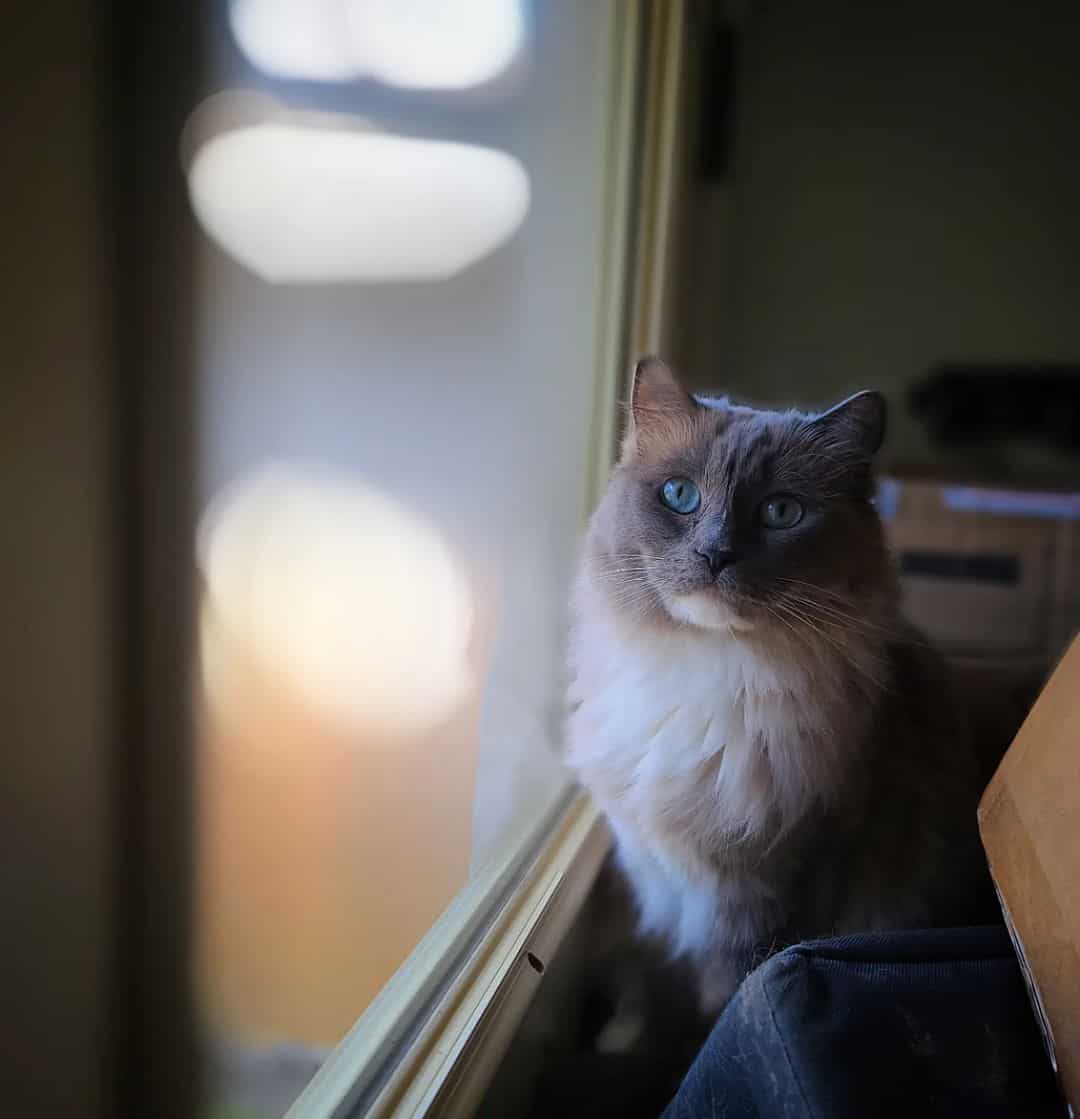
Photo from: @walterbobtail
Mink Ragdolls are very rare, so if you want to get a couple of Mink Ragdoll kittens, you might have to spend some time looking for them.
There are two reasons why they’re not very common:
• Ragdoll breeders usually chose to breed the Traditional Ragdoll, so Mink Ragdolls are hard to find.
• Breeding Mink Ragdolls is quite a difficult task, as breeding two Mink Ragdolls does not produce only Mink Ragdoll kittens.
Many people have never even heard of these cats and even doubt that they are true Ragdolls but we can assure you they definitely are.
Are Mink Ragdoll Cats Expensive?
Depending on the breeder, Mink Ragdolls can get pretty expensive.
Mink Ragdolls are indeed rare and breeding them is not a simple task, especially considering that breeding two Mink Ragdolls can give rise to Traditional Ragdoll kittens.
Some breeders might take advantage of this, and significantly over price them.
If you want to get a Mink Ragdoll kitten, make sure to source it from a reputable breeder. Even if your search for the right breeder might not be an easy one – I’m sure it will be worth it when you find one!
Is Grooming A Mink Ragdoll Cat A Lot Of Work?
Good news for any Mink Ragdolls owners – these cats only require minimal grooming!
Mink Ragdolls actually have no undercoat. Most people assume they do because their coat is so fluffy, but it’s a common misconception.
No undercoat is great news for cat owners – it means less shedding and therefore less grooming! However, because these cats change their coats in the fall and spring, you will notice more shedding during those times.
They are not prone to tangles and matting, but they still need regular brushing at least two times a week.
If you’re wondering about how often you should wash them, the good news is that around once a month is enough. Although cats are perfectly capable of keeping themselves clean, periodic baths can help keep long fur smelling fresh and clean!
Cuteness Overload Alert – Mink Ragdoll Kittens!
Every kitten, no matter the breed, is adorable. I’m sure everyone can agree with me on this one. However, there is something very special about Mink kittens.
You might not have known this, but Mink Ragdoll kittens are born with colored fur!
This is completely different from Traditional Ragdoll kittens. All Traditional Ragdoll kittens start out with white fur covering every inch of their bodies. The pattern only becomes apparent as they get older and some areas of their fur turn colored.
This is not the case with Mink Ragdoll kittens, as they proudly show off their fur color from the moment they come into this world! Pretty adorable!
Can Mink Ragdoll Cats Be Considered Hypoallergenic?

Photo from: @walterbobtail
I’m sorry to disappoint you, but no – Mink Ragdoll cats are not hypoallergenic.
Although no cat is truly hypoallergenic, there are cats that are more hypoallergenic than others, and unfortunately, Mink Ragdolls are not on that list.
Although Mink Ragdolls don’t shed too much, they still shed enough to cause allergy symptoms in allergy-prone individuals. And even though they don’t require a lot of grooming, they still do need to be groomed, meaning close exposure to cat allergens for the owner.
If you’re prone to developing sneezing fits, runny nose and itchy eyes due to the presence of cat allergen, Mink Ragdolls might not be the best choice for a pet…
Also Read: Are Bengal Cats Hypoallergenic? Here’s What You Need To Know
A Never-Ending Battle No2: Mink Vs Sepia Vs Solid Ragdolls
Ragdolls come in the variations of Mink, Sepia, and Solid, and all of these have been around since the breed’s origin. In fact, the origin of all three of them can be traced back to Ann Baker’s Ragdolls.
All three varieties are non-traditional Ragdolls, but they are definitely not separate cat breeds.
Now, let’s go into some detail about each of these variations…
Mink Ragdolls
Mink Ragdolls are famous for their extra-soft fur, which is much thicker than the coats of the other Ragdoll varieties.
Although the coat coloring is much darker and richer, Mink Ragdoll cats come in the same coat colorations as any other Ragdoll – seal, blue, chocolate, lilac, red, and cream, as well the three common patterns – bicolor, colorpoint, and mitted.
Their large, blue-green eyes are another distinctive feature that these cats are known for, as well as their kittens having fully colored fur!
Sepia Ragdolls
The sepia ragdoll is also a non-traditional Ragdoll variety. Although they’re uncommon, they are no less beautiful than any other Ragdoll cat.
These kitties are very recognizable as they are the darkest Ragdolls out there. Compared to, say, a Mink Ragdoll cat of the same color, their fur is much darker.
This trait is due to their genetics – they carry two cb alleles (cb is the Burmese gene, responsible for the dark color of the coat).
Sepia Ragdolls may have a unique eye color – green, blue, aqua or even gold. Also, their kittens are not born white, but fully colored!
Solid Ragdolls
Another variety of Ragdolls that stirs up controversy is the Solid Ragdoll.
If you remember, traditional Ragdolls are born completely white and get their color over time while Mink Ragdolls are born with color but darken slightly over time. Solid Ragdolls are different again!
Solid Ragdoll kittens are born with colored fur, and their color does not darken over time – it stays completely the same.
The coat color pallette of Solid Ragdolls has black, blue, chocolate, lilac, white, red, and cream. When it comes to coat patterns, colorpoint, mitted and bicolor are the most common ones.
Their eye color pallete is beautiful – their eyes can be many shades of green, blue, aqua, copper or even different colored eyes!
What’s The Fuss?
In the description of the three Ragdoll varieties, you probably noticed that they differ quite a bit from the traditional Ragdolls we see in competitions.
Precisely because of that difference in physical appearance (most notably the coat coloration and eye color) and the time it takes for the color to mature, the Mink, Sepia and Solid Ragdolls tend to stir up controversy.
Are they even real Ragdolls? Why are they so different? Should they be in the same category as the traditional Ragdolls? These are just some of the questions that arise.
Most breeders choose not to breed the three mentioned varieties, for precisely these reasons.
How Do Cat Registry Organizations Regard Mink Ragdolls?
The majority of cat registries do not accept Mink (or Sepia or Solid) Ragdolls to enter their competitions as Ragdoll cats.
The Cat Fanciers’ Association (CFA) in their Ragdoll Breed Standard dont even mention Mink Ragdolls. Essentially, Mink Ragdolls don’t fit their description of what Ragdoll cats should look like.
The International Cat Association (TICA) and their Ragdoll Breed Standard also doesn’t mention the Mink Ragdolls as they don’t fit their description of what Ragdolls should look like.
I would say the most obvious reason for their non-acceptance is their eye color. It is clearly stated by almost all cat registries, that the eye color of Ragdolls must be blue and no other colors are permitted.
As a result, Mink Ragdolls are not usually accepted in championships or cat shows.
Final Thoughts
As you can see, Mink Ragdolls have an unfair position in most cat registries that chose not to include their traits in the breed standard.
Because of this, many breeders specifically choose not to breed them and cat-show lovers will, of course, avoid getting them as they cannot be entered into competitions.
This doesn’t change the fact that Mink Ragdolls are extremely gorgeous.
Their interesting genetics have created stunning results – luxurious, thick and extremely soft fur comparable to the fur of a mink!
Piercing aqua eyes are another fascinating feature, as well as the fact that their kittens are born colored!
Now you know everything there is to know about Mink Ragdolls! I hope you liked this article and if you can – go out and spread the word about these unique kitties!
Related Articles:
• The Beauty Of The Chocolate Point Ragdoll Cat
• Flame Point Siamese – Everything You Need To Know
• Maine Coon Tuxedo Cat–Types, Personality, Appearance & More

